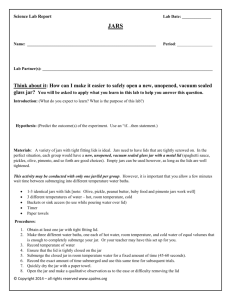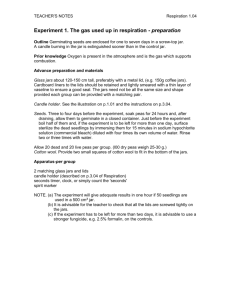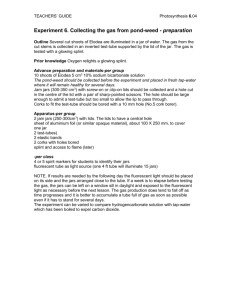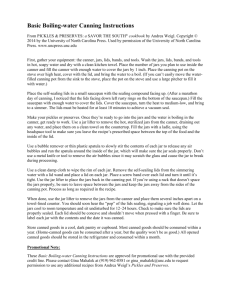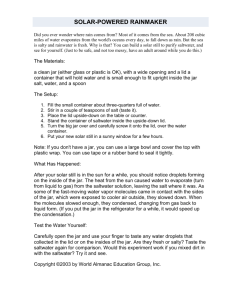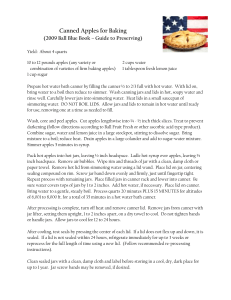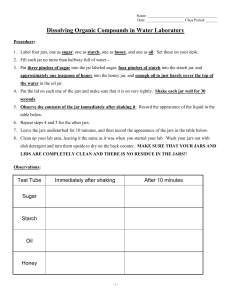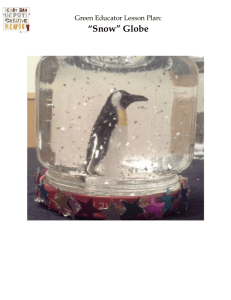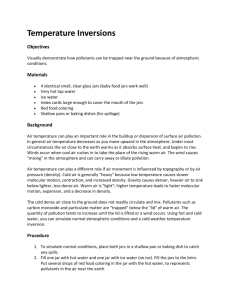Science Lab Report Answer Key Teacher
advertisement
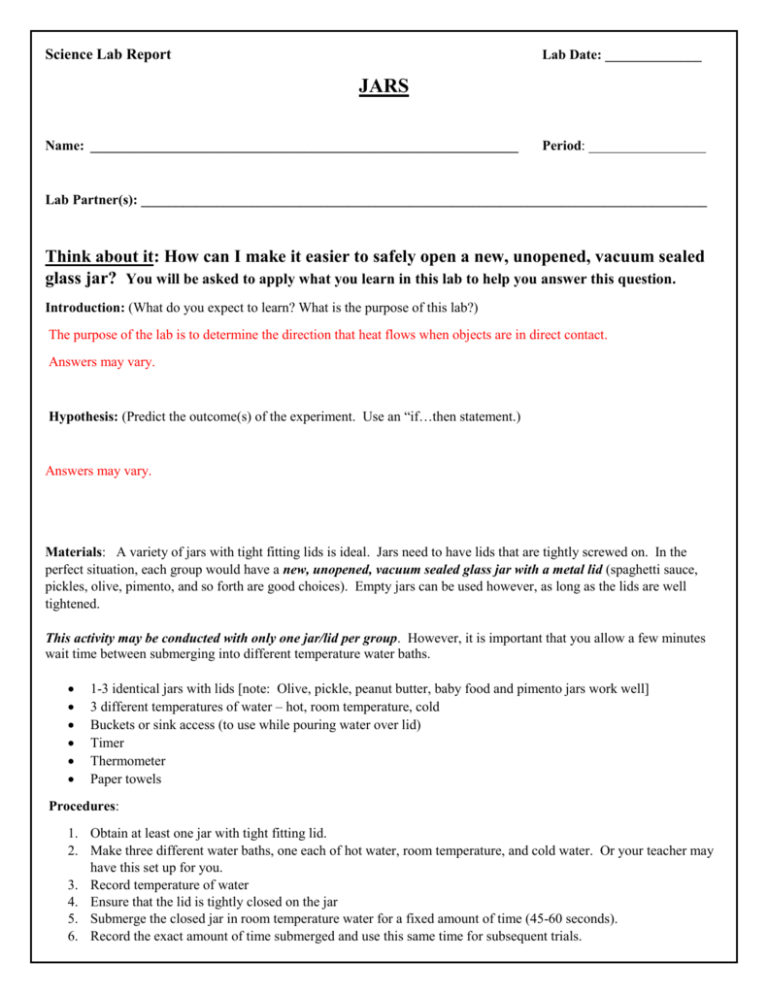
Science Lab Report Lab Date: ______________ JARS Name: ______________________________________________________________ Period: _________________ Lab Partner(s): __________________________________________________________________________________ Think about it: How can I make it easier to safely open a new, unopened, vacuum sealed glass jar? You will be asked to apply what you learn in this lab to help you answer this question. Introduction: (What do you expect to learn? What is the purpose of this lab?) The purpose of the lab is to determine the direction that heat flows when objects are in direct contact. Answers may vary. Hypothesis: (Predict the outcome(s) of the experiment. Use an “if…then statement.) Answers may vary. Materials: A variety of jars with tight fitting lids is ideal. Jars need to have lids that are tightly screwed on. In the perfect situation, each group would have a new, unopened, vacuum sealed glass jar with a metal lid (spaghetti sauce, pickles, olive, pimento, and so forth are good choices). Empty jars can be used however, as long as the lids are well tightened. This activity may be conducted with only one jar/lid per group. However, it is important that you allow a few minutes wait time between submerging into different temperature water baths. 1-3 identical jars with lids [note: Olive, pickle, peanut butter, baby food and pimento jars work well] 3 different temperatures of water – hot, room temperature, cold Buckets or sink access (to use while pouring water over lid) Timer Thermometer Paper towels Procedures: 1. Obtain at least one jar with tight fitting lid. 2. Make three different water baths, one each of hot water, room temperature, and cold water. Or your teacher may have this set up for you. 3. Record temperature of water 4. Ensure that the lid is tightly closed on the jar 5. Submerge the closed jar in room temperature water for a fixed amount of time (45-60 seconds). 6. Record the exact amount of time submerged and use this same time for subsequent trials. 7. 8. 9. 10. 11. Quickly dry the jar with a paper towel. Open the jar and make a qualitative observation as to the ease or difficulty removing the lid Repeat steps 3-7 in the cold water and then again for the hot water. If time permits, repeat the experiment several more times. Rank the data using a scale: 1- Easy; 2 – Somewhat hard; 3 - Most Difficult Material of jar ________________________ Material of lid _______________________ Number of jars ________ The independent or tested variable is: Temperature of Water The dependent or outcome variable is: The ease or difficulty of opening the lid Data: Trial 1 False Water Temperature (C) Time (s) Ease of Opening Rank Temperature (C) Time (s) Ease of Opening Rank Temperature (C) Time (s) Ease of Opening Rank Room Temperature Cold Hot Trial 2 Water Room Temperature Cold Hot Trial 3 Water Room Temperature Cold Hot Results: (Explain you data in words.) Answers will vary Analysis: (Explain how your data relates to what you learned about heat flow) Students should learn that submerging the jar in the hot water results in the easiest opening of lids, followed by the room temperature and cold water jars. Conclusion: Use the Claim, Evidence, Reasoning Rubric and format set forth. Claim - A conclusion that answers the original question. Evidence – Scientific data that supports the claim. The data needs to be appropriate and sufficient to support the claim. Reasoning – A justification that links the claim and evidence. It shows why the data count as evidence by using appropriate and sufficient scientific principles. Students use original question as their claim. Students discuss scientific evidence (data) that support their claim. Students make a connection between their claim and evidence with justification.

